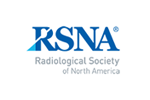Palpable Breast Masses
Palpable breast masses are breast lumps that can be felt by touch. Most breast lumps are benign (not cancerous). However, breast lumps are the most common symptom associated with breast cancer and require imaging tests to determine if they are benign or malignant.
For women aged 30 and older with a new breast lump, diagnostic mammography and diagnostic digital breast tomosynthesis (or “3-D mammogram”) are usually appropriate as a first test. Ultrasound (US) breast (sonogram) may also be appropriate as a first test. These tests are complementary and may be performed together.
If initial mammography findings are normal, US breast may be appropriate for further evaluation. If initial mammography findings are suspicious or highly suggestive of malignancy, US breast is usually appropriate for additional evaluation.
For female patients younger than 30 with a breast lump, US breast is usually appropriate as first test. If US findings are suspicious, mammography and ultrasound-guided needle biopsy are usually appropriate.
Individuals with a new breast lump with normal findings on imaging tests should follow up with their doctor because some cancers may have a normal appearance on imaging. A new breast lump might need a biopsy even when the mammogram or ultrasound is normal.
Sometimes, US or mammography will show a finding that is characterized as “probably benign” or very unlikely to be cancer (BI-RADS 3). In this case, no other imaging is needed right away, but a follow-up examination will be recommended to make sure that the finding does not grow or change.
This page was reviewed on April 23, 2024



